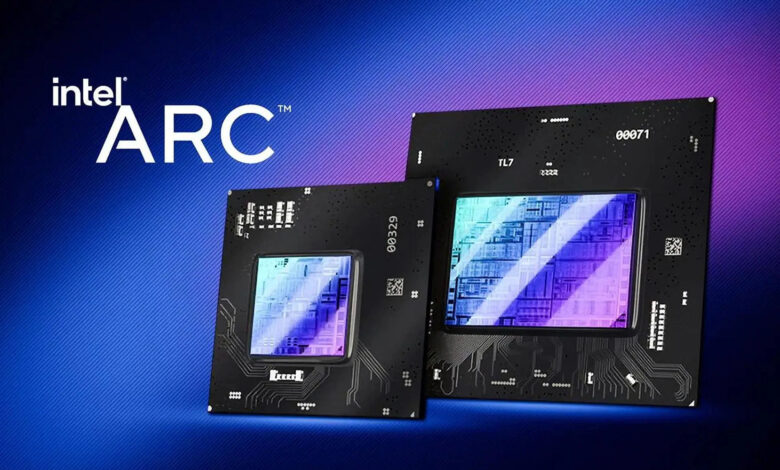Why Do Intel ARC Signals Change? Examining the Shift in Graphics Paradigms

Two major companies have dominated the graphics processing unit (GPU) market for decades: AMD and Nvidia. These titans have influenced computer graphics and are the driving force behind everything from sophisticated artificial intelligence applications to lighthearted gaming.
On the other hand, the Intel ARC GPU has surfaced as a new competitor. Arc graphics cards, with their release, were a major turning point in the GPU market.
Investigating the possible paradigm shift in graphics that Intel Arc may bring about, this article explores the reasons why it is a noteworthy development.
Overview of Intel’s Early History
Intel Arc is Intel’s ambitious entry into dedicated graphics solutions, marking a break from the company’s typical focus on central processing units. Intel Arc wants to challenge established companies such as NVIDIA and AMD by leveraging its silicon design and manufacturing skills to create revolutionary GPU solutions.
On the other hand, Intel Arc GPU signifies a more significant change, a change in the fundamental structure of graphics technology than just the competitive environment.
AMD and NVIDIA’s Domination in the Traditional Paradigm
For years, NVIDIA and AMD have dominated the GPU market, influencing the course of graphics technology with their flagship devices and proprietary technologies.
NVIDIA’s GeForce and AMD’s Radeon series have become synonymous with high-performance gaming, producing lifelike images and powering virtual reality experiences with unprecedented fidelity.
However, the NVIDIA/AMD duopoly has resulted in several drawbacks. High pricing, limited availability, and proprietary ecosystems have frequently hampered accessibility and innovation in the GPU market.
Furthermore, as the demand for graphics processing has expanded beyond gaming to include artificial intelligence, data analytics, and content creation, the need for diversified, scalable solutions has grown. Here is why this is important:
A Close Look at the Main Forces Behind Change
1. Innovative Technology
Intel Arc’s effect is driven by its commitment to technological innovation. Intel Arc claims to deliver cutting-edge GPU solutions designed for a wide range of workloads and use cases, drawing on Intel’s expertise in semiconductor production and architecture design.
Intel Arc intends to push the boundaries of graphics processing by offering real-time ray tracing and AI-enhanced rendering, as well as seamless multitasking and content creation.
2. Competition in the Market
With Intel Arc, the duopoly held by NVIDIA and AMD is challenged by a new player in the market. Competition breeds innovation, and Intel’s entry into the GPU industry is expected to drive improvements in performance, efficiency, and pricing.
As Intel Arc develops traction, consumers should expect to see a broader range of alternatives and pricing points, resulting in more choice and flexibility in graphics solutions.
3. Mobility and Cost
Democratizing graphics technology and opening up high-performance GPUs to a wider market are two of Intel’s primary objectives with Arc. Intel has the opportunity to launch GPUs with appealing performance at competitive prices by utilizing its economies of scale and manufacturing capabilities.
Consumers in a variety of industries, including professionals, content creators, and gamers, stand to gain from the democratization of graphics technology.
The introduction of Arc represents a potential paradigm shift in the GPU market, which might benefit customers by increasing innovation, competitive pricing, and improving system integration. However, Arc’s voyage will not be without hurdles.
Overcoming Barriers: The Difficulties of Intel Arc
While the potential benefits of Arc are apparent, Intel faces numerous challenges:
- Determining Market Share: Nvidia and AMD have a strong brand presence and a dedicated client base. Intel needs to successfully showcase Arc’s features and persuade customers to switch brands.
- Optimizing Drivers: Drivers play an important role in optimizing GPU performance. Intel faces a learning curve to catch up to Nvidia and AMD in terms of robust and efficient drivers that unlock the full power of Arc.
- Integrating the Software Ecosystem: Popular games and creative applications are frequently optimized for Nvidia and AMD architectures. Intel must collaborate extensively with developers to guarantee that Arc GPUs operate well across a wide range of software applications.
It will be crucial to resolve these issues if Intel Arc is to succeed in the cutthroat GPU market. Intel, on the other hand, has some advantages that may help them overcome these challenges.
Intel Advantage: Arc’s Potential Assets
Despite its newbie status in the discrete GPU market, Intel has various advantages that could move Arc forward:
- Manufacturing Capabilities – Intel is a global leader in chip fabrication technology. This expertise can be translated into Arc GPUs that are efficient and potentially high-performance.
- Financial Strength – Because Intel is a financially stable corporation, it can invest extensively in R&D, driver optimization, and marketing efforts to establish Arc in the market.
- Integration Potential – As previously stated, tight integration between Intel CPUs and Arc GPUs has the potential to unlock new levels of performance and efficiency in previously incompatible systems.
- The Xe architecture, which is intended to be scalable and efficient, serves as the foundation of Intel Arc. This architecture supports capabilities such as hardware-based ray tracing, which replicates realistic lighting effects, and XeSS (Xe Super Sampling), which competes with Nvidia’s DLSS (Deep Learning Super Sampling) for upscaling resolutions without sacrificing image quality.
These advantages, combined with the potential benefits of more competition, provide a positive picture of Intel Arc’s prospects.
Intel Arc in Action: Unveiling Possibilities
The full effect of Intel Arc is found not only in its technology but also in the ecosystem and experiences it creates. Intel’s dedication to open standards and engagement with software developers provides compatibility and optimization across a diverse set of apps and platforms.
Whether it’s gaming, multimedia creation, or scientific computing, Intel Arc provides performance and versatility tailored to the needs of today’s consumers.
Conclusion: Accepting the Era of Change
The introduction of Intel Arc represents a watershed event in the evolution of graphics technology. By disrupting established paradigms and presenting new possibilities, Intel Arc paves the way for a more diversified, accessible, and innovative GPU ecosystem.
As Intel continues to invest in graphics technology and forms cross-industry relationships, the era of change announced by Intel Arc promises to affect computing’s future for many years.



